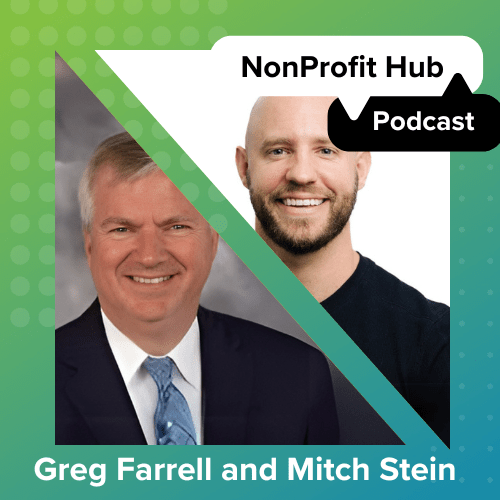Imagine you’re a large, professional organization. You’ve been getting your revenue primarily from memberships, conferences for members, and fundraising ― and you think it’s time to upgrade to a new database system after 20 or so years.
Let’s say the system you decide on is well-known for how it managed members, events, and fundraising. But there’s one glaring problem ― it doesn’t integrate with your organization’s general ledger (GL).
Your nonprofit’s staff was used to an old, clunky system that didn’t do much. But, one thing that it did do was auto-integrate the revenue management modules with the GL. So, the old dogs had to learn some new tricks.
This is a common scenario that we’re seeing more of, as more nonprofits gravitate toward ‘best of breed’ systems. Many find they are the best alternative for effectively running and growing their organizations, especially when decked out with all of the best apps for additional functionality. But, the integration piece, especially with the GL, can cause a lot of angst and drama if it’s not discussed and worked through early on.
We’re going to equip you with some strategic and tactical considerations to take into account when it comes to integrations. Understand that this just scratches the surface ― each item below could be its own article (if not an entire seminar). But these are great points to start the discussion and determine how these items are going to be addressed:
Strategic Considerations
- What does Finance need from the revenue system to meet its recording and reporting obligations? The Finance team is responsible for financial reporting that complies with generally accepted accounting principles (GAAP) and meets the requirements of organizational leadership, government agencies and auditors. Since standard financial reporting data are pulled from the GL, the GL needs to contain all key financial information from other systems, especially revenue systems. So, one of the first things to understand is exactly what Finance needs – and doesn’t need.
- Does, or can, the revenue system house the information that’s needed? Some key transaction data, such as date and amount, are no-brainers. But other information may not be housed in or accessible from the revenue system in standard fields. The objective here is to determine where such data should live without ‘upending’ the revenue system or forcing its users to employ unfamiliar (or unnatural) structures, coding, distributions, etc.
- What business processes need to be put into place to ensure ongoing reconciliation? Reconciliation between the revenue system and the GL is just about the most important aspect of proper integration. The GL will, not unreasonably, see the revenue system as a subsidiary ledger, and at any given time the detail in the subledger must be able to tie to the activity posted in the GL for the same period and accounts, with an audit trail to back it up if necessary. It’s critical to determine what the process is going to be for this, and who will be the accountable owners.
Tactical Considerations
- How often does the revenue system need to sync with the GL? Daily is certainly best-practice, but may not be necessary at times when transaction volume is low, which for some organizations may be year-round. Another excellent rule of thumb is to post from the revenue system to the GL every time there’s a bank deposit. This might be multiple times per week or multiple times per day. While frequent posting will result in more transactions to reconcile, it will also reduce the opportunity for reconciliation errors and remove the ‘needle in the haystack’ syndrome that often comes when posting only monthly.
- Will the standard reports or data file(s) generated by the revenue system work for the accounting system? This has to do with whether the standard outputs include the right information, and in the right format. For data files that are generated by revenue systems in particular, are the correct fields included, are they in the prescribed order, do any columns or rows need to be manipulated, is a header row required, are there any superfluous columns that should be removed or ignored? Also, what about the file itself: does it need to be converted – eg, from Excel to CSV or to XML, to be importable into the GL?
- If not, how is that best remedied, with minimal effort, anxiety, and drama? If outputs from the revenue system do need to be manipulated, what, exactly, has to be done, and who will own the responsibility? And, if changes do need to be made, what controls will be put in place to reduce the risk of errors and reconciliation issues?
Depending on systems, teams can effectively integrate data to their accounting systems by using technology solutions, automated crosswalk software, which can ensure that nobody on either team is required to manipulate transactions, add or delete rows or columns, or convert files to a different format – saving often tremendous effort and ensuring accuracy.
- Who’s in charge? There needs to be a point person on each team with whom the buck stops (no pun intended).
‘Best of Breed’ Breeds Integration
As mentioned above, the move toward ‘best of breed’ technology solutions in the nonprofit sector naturally leads to the need for integration, whether manual, automated, or hybrid. This ‘con’ is strongly outweighed by the ‘pros’ of having systems that do, and do well, exactly what is needed to be done (eg, membership, online giving, grant-making, event management, case management, and the list goes on).
Even well-known and trusted solutions like Blackbaud Financial Edge, Raiser’s Edge NXT, or Salesforce, sometimes need an additional integration solution to ensure maximum effectiveness and efficiency.
While integration technology can play a big part in reducing the burden, none of it will work effectively unless, and until, the questions listed above are discussed collaboratively and objectively, and to the satisfaction of the key stakeholders.






